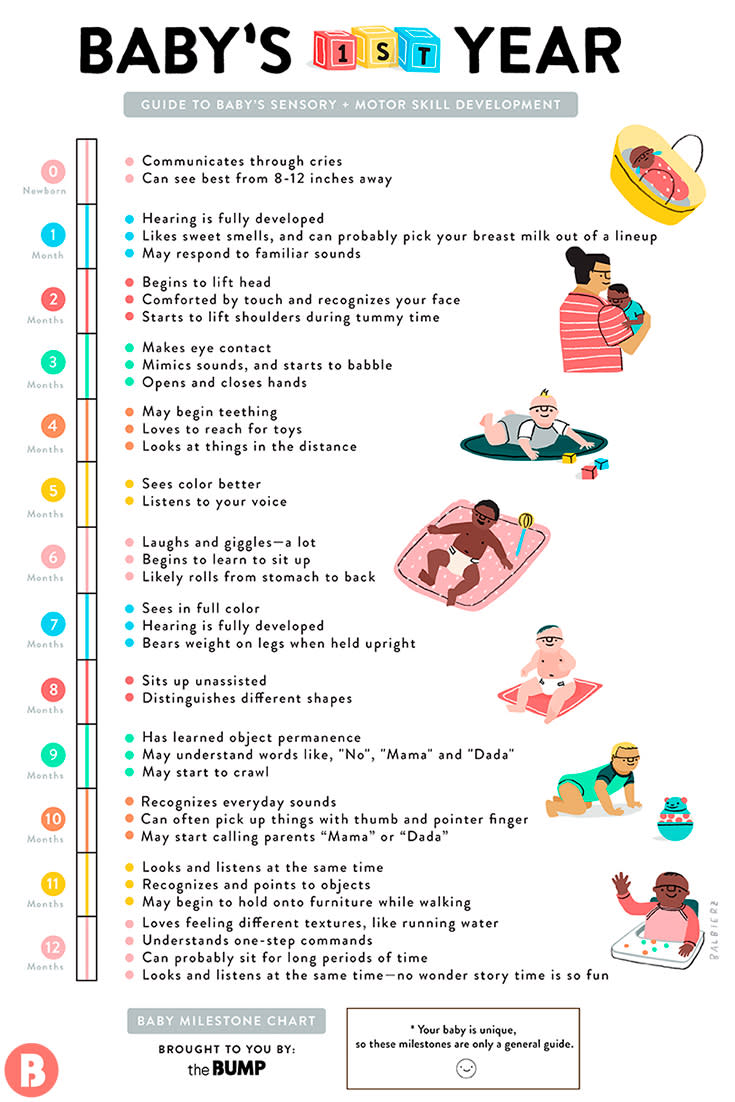
Welcoming a new baby into the world is one of the most exciting times in a parent’s life. From the moment they come into your arms, you want to do everything you can to help them grow and develop into happy, healthy little humans. While every baby develops at their own pace, there are certain milestones that parents can look out for to ensure their little ones are on track. In this article, we’ll be exploring the Baby Development Milestones Chart and what it can tell you about your baby’s progress.
Table of Contents
What is a Baby Development Milestones Chart?
A Baby Development Milestones Chart is a tool that provides parents with an overview of the key developmental milestones their baby may reach within certain age ranges. These milestones can be physical, such as rolling over or crawling, or cognitive, such as the ability to recognize faces or solve simple problems. While it’s important to remember that every baby is different and there’s no need to panic if your little one hasn’t met a specific milestone yet, these charts can be a helpful way to track your baby’s progress and make sure they’re hitting the right targets.
What are some examples of Baby Development Milestones?
There are a wide variety of developmental milestones that your baby may reach in their first year of life. Here are some examples, broken down by age range:
0-3 Months
- Lifts head briefly while lying on their stomach
- Starts to track objects with their eyes
- Recognizes familiar faces
4-6 Months
- Rolls over from front to back and back to front
- Sits up with support
- Reaches for and grasps objects
7-9 Months
- Crawls on hands and knees
- Stands while holding onto furniture
- Responds to their name
10-12 Months
- Walks while holding onto furniture
- Says “mama” or “dada” with meaning
- Points to objects when asked
Again, it’s important to remember that every baby develops at their own pace, and some babies may reach these milestones earlier or later than others. However, if you’re concerned about your baby’s development, it’s always a good idea to speak with your pediatrician.
How can parents use a Baby Development Milestones Chart?
If you’re a new parent, a Baby Development Milestones Chart can provide you with a general guide of what to expect as your baby grows and develops. By keeping track of your baby’s progress, you can ensure they’re reaching the appropriate milestones for their age and identify any potential developmental delays early on. You can use the chart to keep a record of when your baby reaches certain milestones, which can be helpful for future doctor’s visits or just as a keepsake to look back on as your baby grows up.
What are some ways parents can encourage their baby’s development?
While every baby develops at their own pace, there are certain things parents can do to help encourage their baby’s development:
- Provide plenty of tummy time to help develop neck and shoulder muscles
- Engage in playtime that encourages reaching, grasping, and crawling
- Talk and sing to your baby to help them develop language skills
- Read to your baby to help develop cognitive skills
By providing a supportive and stimulating environment, parents can help their babies reach their full potential.
Conclusion
In conclusion, a Baby Development Milestones Chart can be a helpful tool for new parents who want to keep track of their baby’s progress. While it’s important to remember that every baby develops at their own pace, these charts can provide a helpful guide for what to expect as your baby grows and develops. By keeping track of your baby’s milestones and providing a supportive and stimulating environment, you can help your little one reach their full potential and grow into a happy, healthy child.
Frequently Asked Questions
Q: Should I be concerned if my baby hasn’t reached a certain milestone by a certain age?
A: Not necessarily. Every baby develops at their own pace, and some babies may reach certain milestones earlier or later than others. However, if you’re concerned about your baby’s development, it’s always a good idea to speak with your pediatrician.
Q: How can I track my baby’s milestones?
A: You can use a Baby Development Milestones Chart to keep track of your baby’s progress. Many baby books or apps also include milestone trackers that you can use to record when your baby reaches certain milestones.
Q: What are some things I can do to encourage my baby’s development?
A: Providing plenty of tummy time, engaging in playtime that encourages reaching and crawling, talking and singing to your baby, and reading to your baby are all great ways to encourage your little one’s development.
Q: What should I do if I’m concerned about my baby’s development?
A: If you’re concerned about your baby’s development, speak with your pediatrician. They can help identify any potential developmental delays and provide resources for additional support if needed.
Q: How can I support my baby’s development as they get older?
A: As your baby gets older, you can continue to encourage their development by providing a stimulating environment, engaging in playtime that encourages problem-solving and creativity, and continuing to read and talk to your baby.
